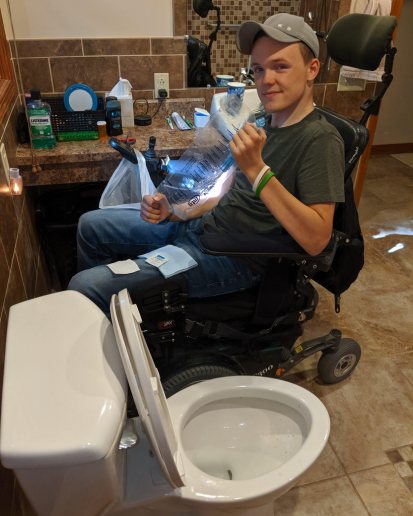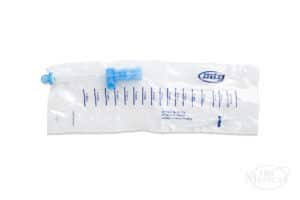 My name is Mason Ellis. In my senior year of high school, I was in a car accident that left me a quadriplegic with a C5 spinal cord injury. You can read my story of recovery here. Since then, I have been actively working on beating my spinal cord injury every day. These days, I try to use my experience to help others when I can outside of work and school. For example, I love the chance to reach out and mentor newly spinal cord injured patients. Another way I’ve been sharing my experience is through my YouTube channel. All my original videos offer viewers helpful information about life with a spinal cord injury.
My name is Mason Ellis. In my senior year of high school, I was in a car accident that left me a quadriplegic with a C5 spinal cord injury. You can read my story of recovery here. Since then, I have been actively working on beating my spinal cord injury every day. These days, I try to use my experience to help others when I can outside of work and school. For example, I love the chance to reach out and mentor newly spinal cord injured patients. Another way I’ve been sharing my experience is through my YouTube channel. All my original videos offer viewers helpful information about life with a spinal cord injury.
After becoming a quadriplegic, it is guaranteed that you will get overwhelmed by everything that you think you cannot do. It’s not that you can’t necessarily do those things anymore. You just have to do them in a different way. For example, we all have to empty our bladders regularly. After a spinal cord injury, the bladder’s nerves can also be affected, so you have to use an intermittent catheter. Self-catheterizing can be difficult or even seem impossible for those with limited hand dexterity like myself. However, I assure you that it is possible. Below is my experience with some tips for learning to self-cath with limited hand dexterity.
Self-Cathing as a New Quadriplegic
When I was still at the rehabilitation hospital after my accident, I remember nurses catheterizing me using a straight catheter. They told me I’d be able to self-catheterize independently before I left. 29 days later, I left rehab. I was never shown a catheter that I could use on my own, so I still needed someone else to catheterize me. I decided to take it upon myself to find a catheter that I’d be able to use.
At that time, I assumed all catheters were the same because I’d only seen straight catheters. However, I soon found out that I assumed wrong. A little research revealed a new world of catheter types. I quickly found out about all of the features that different and more advanced catheters offered, even for individuals like me with limited hand dexterity. One catheter that stood out to me was the EZ-Gripper™ Closed System Catheter Kit.

Luckily, I found out that my new catheter supplier, 180 Medical, carried the EZ-Gripper™ and many other brands and types of catheter products. After I spoke with one of their Catheter Specialists, they sent me several samples of the EZ-Gripper™ catheter. This way, I could try it out first before switching my orders completely.
The first time I self-cathed, it took me one whole hour, but I did it all by myself. It felt awesome to know that self-cathing was possible for me! With time and practice, my technique and ability improved. Today, I can self-catheterize within 5-10 minutes!
If you’re a quadriplegic like me or if you live with limited hand dexterity due to another condition, I highly recommend researching this catheter type. 180 Medical can help you with free catheter samples to try out so you find one that works well for you too!
Finding the Right Catheter for You
When searching for catheters, it is important to know the available catheter options for limited hand dexterity. Finding the right catheter that works best for you is an important step in figuring out how to self-catheterize.
Personally, finding the EZ-Gripper™ changed my life, and I know that having the ability to self-cath will change yours, too! If I had been told about the EZ-Gripper™ catheter in rehab, I believe my quality of life would have turned around much sooner.
Where to Get Catheter Supplies
Do you want to talk with someone about how to find the best catheter for your unique needs? Do you already know the catheter that works best for you but you’re looking for a reliable catheter supplier?
No matter where you are in your journey to learning how to self-cath with limited hand dexterity, 180 Medical’s Catheter Specialists are ready to help! Contact 180 Medical to find out more about your options.
